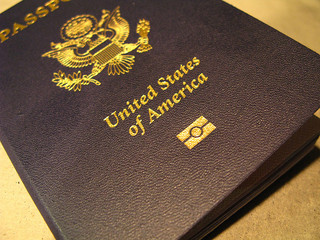What is a Biometric Passport?
The Biometric Passport
The biometric passport is also known as an e-passport, ePassport or a digital passport. It is a combined paper and electronic passport that contains biometric information that can be used to authenticate the identity of travelers. It uses contactless smart card technology, including a microprocessor chip (microchip) and antenna (for both power to the chip and communication) embedded in the front or back cover, or center page, of the passport.
Document and chip characteristics are documented in the International Civil Aviation Organization’s (ICAO) Doc 9303. The passport’s critical information is both printed on the data page of the passport and stored in the chip. Public Key Infrastructure (PKI) is used to authenticate the data stored electronically in the passport chip making it expensive and difficult to forge when all security mechanisms are fully and correctly implemented.
Facial, Fingerprint and Iris Recognition
The standardized biometrics used for this type of identification system is facial recognition, fingerprint recognition, and iris recognition. These were adopted after assessment of several different kinds of biometrics including retinal scan.
The ICAO defines the biometric file formats and communication protocols to be used in passports. Only the digital image (usually in JPEG or JPEG2000 format) of each biometric feature is actually stored in the chip. The comparison of biometric features is performed outside the passport chip by electronic border control systems (e-borders). To store biometric data on the contactless chip, it includes a minimum of 32 kilobytes of EEPROM storage memory, and runs on an interface in accordance with the ISO/IEC 14443 international standard, amongst others. These standards intend interoperability between different countries and different manufacturers of passport books.
Some national identity cards (e.g. in the Netherlands, Albania and Brazil) are fully ICAO9303 compliant biometric travel documents. However others, such as the USA passport card, are not.
E-Passports – History
First introduced by Malaysia in 1998, the RFID passport (“E-passport”) was issued to identify critical information about the passport holder. In addition to information also contained on the visual data page of the passport, Malaysian e-passports record the travel history (time, date, and place) of entries and exits from the country.
Many countries have now adopted the “E-passport” that insert RFID in passports include: Argentina, Australia, Brazil, Canada, China, European Union countries, Hong Kong, India, Indonesia, Israel, Japan, Malaysia, New Zealand, Norway, Philippines, Russia, Saudi Arabia, Singapore, South Korea, Switzerland, Taiwan, Thailand, United Arab Emirates, and the United States just to name a few. For security reasons, most developed nations have now adopted the e-passport.
The U.S. version of the biometric passport has descriptive data and a digitized passport photo on its contactless chips, and does not have fingerprint information placed onto the contactless chip.
A high level of security became a priority for the United States after the attacks of 11 September 2001. High security required cracking down on counterfeit passports. The production stages of this high-tech passport commenced as the U.S. Government Printing Office (GPO) opened a bidding program in October 2004.
The driving force of the initiative is the U.S. Enhanced Border Security and Visa Entry Reform Act of 2002 (also known as the “Border Security Act”), which states that such smartcard Identity cards will be able to replace visas. As for foreigners travelling to the U.S., if they wish to enter U.S. visa-free under the Visa Waiver Program (VWP), they are now required to possess machine-readable passports that comply with international standards. Additionally, for travelers holding a valid passport issued on or after 26 October 2006, such a passport must be a biometric passport if used to enter the U.S. visa-free under the VWP.
Upcoming Article:
Look out for our next article in this series – “Is the Biometric Passport Safe?” You will find it informative and fascinating reading. Click HERE to read this article.
Protect you Biometric Passport from scammers! This product is a simple and inexpensive solution.
Image: RFID Passport


